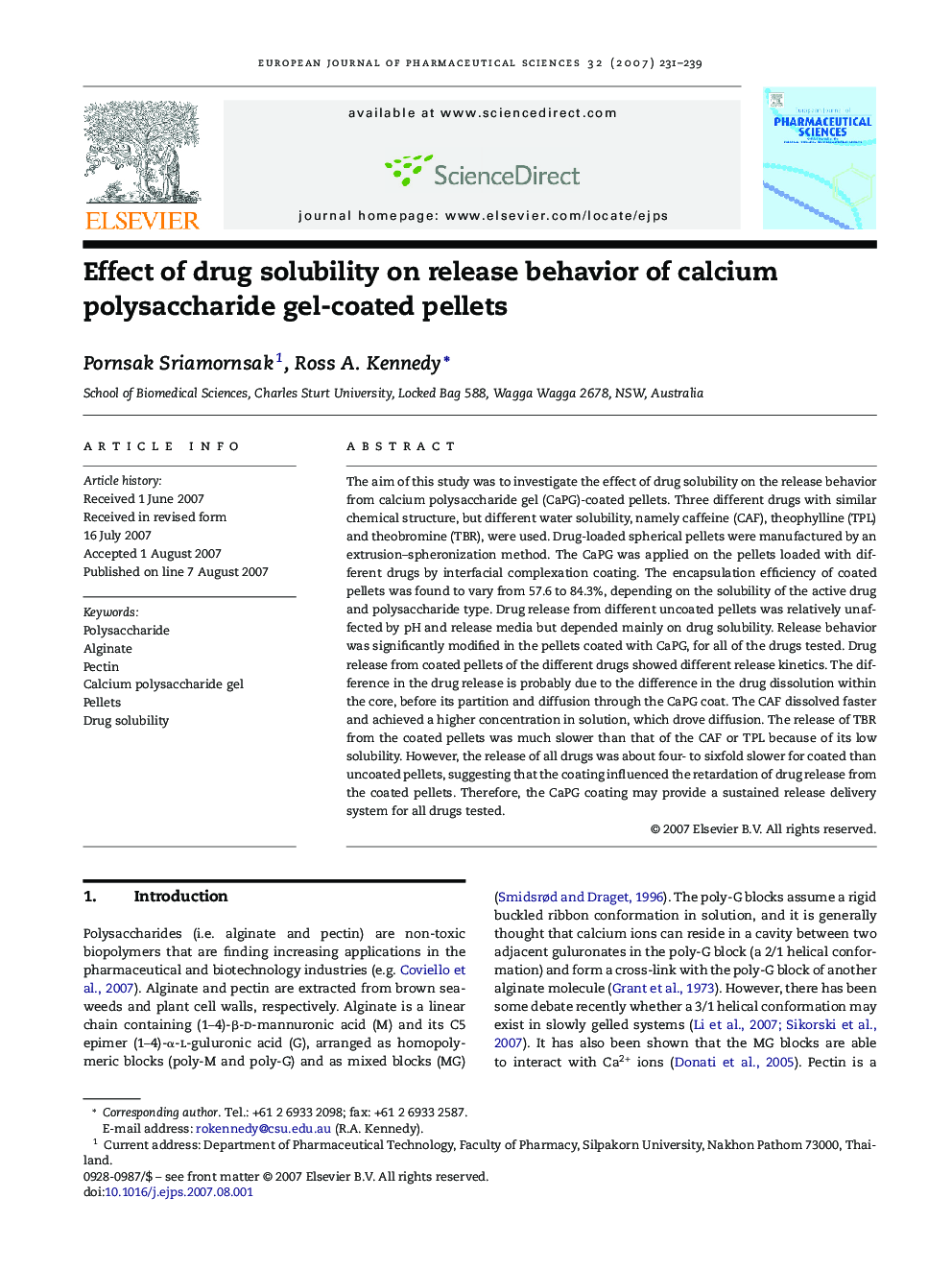| Article ID | Journal | Published Year | Pages | File Type |
|---|---|---|---|---|
| 2481776 | European Journal of Pharmaceutical Sciences | 2007 | 9 Pages |
The aim of this study was to investigate the effect of drug solubility on the release behavior from calcium polysaccharide gel (CaPG)-coated pellets. Three different drugs with similar chemical structure, but different water solubility, namely caffeine (CAF), theophylline (TPL) and theobromine (TBR), were used. Drug-loaded spherical pellets were manufactured by an extrusion–spheronization method. The CaPG was applied on the pellets loaded with different drugs by interfacial complexation coating. The encapsulation efficiency of coated pellets was found to vary from 57.6 to 84.3%, depending on the solubility of the active drug and polysaccharide type. Drug release from different uncoated pellets was relatively unaffected by pH and release media but depended mainly on drug solubility. Release behavior was significantly modified in the pellets coated with CaPG, for all of the drugs tested. Drug release from coated pellets of the different drugs showed different release kinetics. The difference in the drug release is probably due to the difference in the drug dissolution within the core, before its partition and diffusion through the CaPG coat. The CAF dissolved faster and achieved a higher concentration in solution, which drove diffusion. The release of TBR from the coated pellets was much slower than that of the CAF or TPL because of its low solubility. However, the release of all drugs was about four- to sixfold slower for coated than uncoated pellets, suggesting that the coating influenced the retardation of drug release from the coated pellets. Therefore, the CaPG coating may provide a sustained release delivery system for all drugs tested.
